Select Language
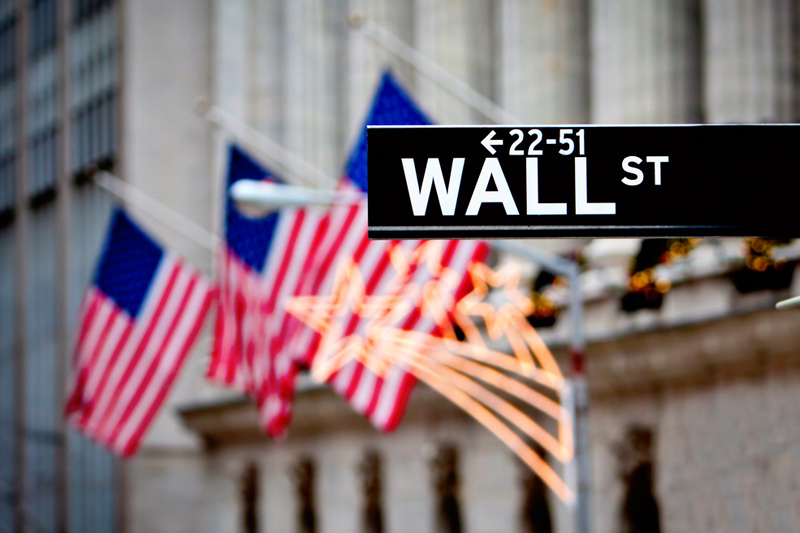
The S&P 500 closed higher Tuesday, as data showing inflation slowed in April supported bullish sentiment on risk just days after the U.S.-China trade deal agreement.
At 4:00 p.m. ET (20:00 GMT), the Dow Jones Industrial Average fell 269 points, or 0.6%, while the S&P 500 jumped 0.7%, and the NASDAQ Composite gained 1.6%.
Inflation shows signs of cooling
The latest consumer price index, released earlier Tuesday, indicated that inflation remained contained, even as economists assessed the impact of rapidly-evolving U.S. trade policies.
The headline consumer price index grew by 2.3% in the 12 months to April, compared with expectations that it would match March’s pace of 2.4%. It was the lowest rate of inflation since February 2021, shortly before pent-up pandemic-fueled demand and supply constraints led to soaring prices.
Month-on-month, the measure came in at 0.2% following a decline of 0.1% in the prior month, according to Labor Department data on Tuesday. Estimates had called for an uptick of 0.3%.
Core inflation, which strips out volatile items like food and fuel, also rose 0.2% on a monthly basis, below the 0.3% expected, and 2.8% annually.
"There are no signs of tariffs pushing prices yet," Morgan Stanley said in a recent note, just days after the U.S. and China agreed a trade deal. Washington agreed to substantially cut its elevated tariffs on Beijing to 30%, after they were raised to at least 145% by President Donald Trump. China, meanwhile, said it would slash its levies to 10% from a retaliatory level of 125%. Both countries also said they would suspend the tariffs for 90 days.
The U.S. will also bring down tariffs on lower-value products imported from China, further cooling a trade spat with Beijing.
This news prompted economists at Goldman Sachs to cut their estimated risk of a recession in the U.S. to 35% from 45%.
China airlines return to Boeing - Bloomberg; Nvidia surges on major chip deal
In the corporate sector, Boeing (NYSE:BA) stock rose after Bloomberg reported that China has removed a month-long ban preventing local airlines from taking delivery of its planes, in another possible easing of the trade tensions between Washington and Beijing.
Government officials have begun instructing local carriers and government agencies this week that deliveries from the U.S. planemaker can resume, the Bloomberg report said, citing people familiar with the matter.
Elsewhere, NVIDIA Corporation (NASDAQ:NVDA) jumped more than 6% after announcing the sale of 18,000 of AI chips to Saudi Arabian company Humain. The Saudi-based company intends to use the chips to build its 500 megawatt data center.
Unitedhealth (NYSE:UNH) slumped after the health insurer suspended its full-year financial forecast due to a bigger-than-anticipated spike in medical costs, while CEO Andrew Witty has decided to step down from the helm of the company.
Under Armour (NYSE:UAA) stock rose after the sportswear maker’s quarterly revenue topped expectations, even after it reported a first-quarter loss.
Coinbase Global (NASDAQ:COIN) surged, with the crypto exchange set to join the S&P 500 index, replacing Discover Financial Services (NYSE:DFS) before the start of trading on May 19.
Peter Nurse, Ambar Warrick contributed to this article.

LONDON (Reuters) - Britain’s jobs market showed further signs of a slowdown as employment fell and growth in wages cooled, according to official data published on Tuesday that is likely to reassure the Bank of England that inflation pressures are waning.
Provisional data provided by employers to the tax authorities showed the number of employees fell by 33,000 in April after 47,000 drop in March.
Vacancies fell further below their pre-COVID pandemic level as they dropped by 42,000 or 5.3% in the three months to April to 761,000, the Office for National Statistics said.
Average weekly earnings, excluding bonuses, rose by 5.6% in the first three months of 2025 compared with the same period last year, the slowest increase since the three months to November last year, the ONS said.
A Reuters poll of economists had pointed to regular wage growth of 5.7%.
"The broader picture continues to be of the labour market cooling," ONS Director of Economic Statistics Liz McKeown said.
The BoE is monitoring closely the inflation pressures in Britain’s labour market as it considers whether to speed up its pace of interest rate cuts.
Sterling was little changed after the data was published.
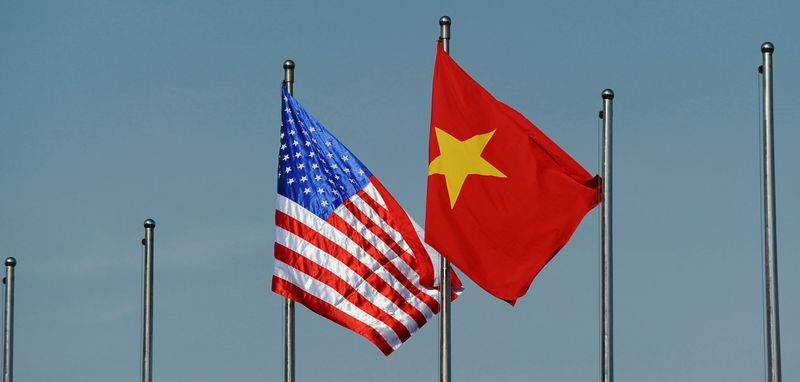
By Francesco Guarascio
HANOI (Reuters) -Vietnam is stepping up its fight against counterfeits and digital piracy after the United States accused the country of being a major hub for these illegal activities and threatened crippling tariffs, documents reviewed by Reuters show.
Among products that are subject to increased inspections at borders to ascertain their authenticity are luxury goods from Prada (OTC:PRDSY) and Gucci owner Kering (EPA:PRTP), electronic devices made by Google (NASDAQ:GOOGL) and Samsung (KS:005930), and toys from Mattel (NASDAQ:MAT) and Lego, according to a document dated April 1 from the customs department of the finance ministry.
Consumer goods such as shampoos and razors sold by Procter & Gamble (NYSE:PG) and Johnson and Johnson products are also included in the list, the document showed.
The crackdown focuses on imported counterfeits, not those that could be made in Vietnam, which are also of concern to the administration of U.S. President Donald Trump.
A clampdown on the use of counterfeit software is also underway, according to a warning from inspectors at the Ministry of Culture sent on April 14 to a local company, whose name was redacted from the document seen by Reuters.
The letter, it says, followed a complaint from the Business Software Alliance (BSA), the industry’s global trade association, whose members include Microsoft (NASDAQ:MSFT), Oracle (NYSE:ORCL) and Adobe (NASDAQ:ADBE).
A person familiar with the matter said similar letters have been sent to dozens of companies since the start of April.
Vietnam’s finance and culture ministries and the customs department did not reply to requests for comment, nor did any of the mentioned companies.
A spokesperson for BSA said it has for years urged Vietnam to monitor and take action against the unauthorised use of software.
Vietnam’s recent moves are part of an array of measures taken or pledged by the Southeast Asian export-reliant industrial hub to persuade the Trump administration to reconsider punitive tariffs. Vietnam faces duties of 46% on exports to the U.S., its largest market, if confirmed in July after a global pause.
Vietnam and the U.S. began informal talks to avoid tariffs well before Trump announced global "reciprocal" duties on April 2.
Enhanced protection of intellectual property, including the fight against counterfeits and digital piracy, is among the issues being discussed with the U.S. in ongoing tariff talks.
Also under discussion are the reduction of Vietnam’s big trade surplus, the fight against trade fraud such as illegal transshipment, and lowering tariff and non-tariff barriers for U.S. businesses, according to a person briefed on the matter.
Prime Minister Pham Minh Chinh last month instructed officials to strengthen the fight against trade fraud, "especially regarding the origin of goods, counterfeit goods."
The measures are meant to please Washington but some may irk China, which is the main source of Vietnam’s imports.
"NOTORIOUS MARKETS"
Despite enhanced controls on imported counterfeits, fake luxury goods targeted by the authorities were on display last week at Saigon Square Shopping Mall in Vietnam’s business hub Ho Chi Minh City.
The mall is on the list of "notorious markets for counterfeiting" published in January by the U.S. Trade Representative.
"They are not authentic and are made in China," said an attendant in one of the stalls in the market, referring to Prada wallets and bags she’s selling.
She noted counterfeit Prada belts, also available at her stall, were made in Vietnam. The person declined to be named due to the sensitivity of the subject.
Calls to Saigon Square went unanswered. Its website says the mall offers "imitations of famous brands at low prices".
The USTR removed a Vietnamese marketplace at the border with China from its latest watchlist published in January after a crackdown by local authorities. It praised Vietnam’s efforts to combat illegal practices, but also expressed concerns over continuing online sales of counterfeit products and Vietnam’s role in producing fakes.
The Vietnamese platform of Singapore-based e-commerce giant Shopee remained a major hub for the sale of counterfeits, the USTR said.
"As more brands have shifted production from China to Vietnam, stakeholders report that Vietnam has become a key manufacturer of counterfeit products," the USTR said in a separate report published in April.
The USTR and Shopee did not reply to requests for comment.
To improve copyright protection Vietnam is planning to set up specialised courts "to fulfil Vietnam’s commitment... to strictly enforce intellectual property rights" and attract foreign investment, according to a draft law reviewed by Reuters scheduled to be approved by parliament in June.
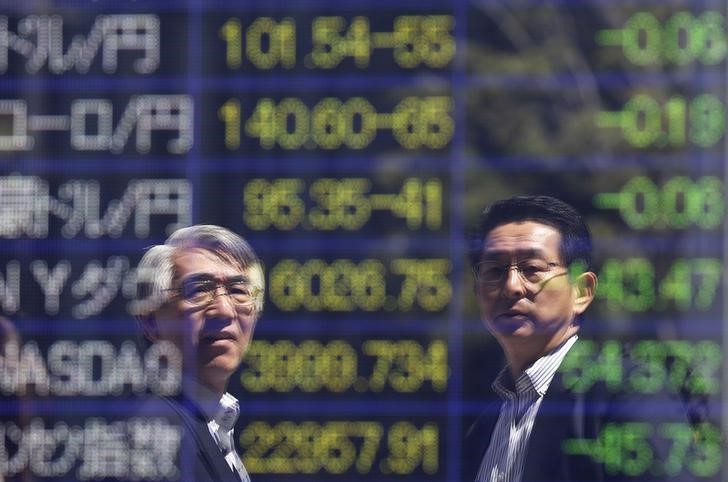
Most Asian stocks rose on Tuesday as investors cheered a sharp deescalation in the U.S.-China trade war, although Chinese markets lagged amid some profit-taking and speculation over a delay in more local stimulus.
Regional markets took a positive lead-in from Wall Street, which clocked stellar gains in overnight trade after Washington and Beijing slashed their respective trade tariffs against each other.
But investors were now holding out for an even bigger deescalation in the tariff exchange, given that both countries still maintained some trade tariffs against each other. U.S. stock index futures fell slightly in Asian trade, with S&P 500 Futures futures falling 0.3% after the S&P 500 rallied 3.3% on Monday.
Markets were also on edge ahead of key U.S. inflation data due later on Tuesday.
Asia stocks cheer US-China tariff deescalation
Japan’s Nikkei 225 and TOPIX indexes were the best performers in Asia, rallying 1.7% and 1.2%, respectively.
Singapore’s Straits Times index added 0.7%, while Australia’s ASX 200 rose 0.7% to its highest level since late-February, following data showing a mild improvement in consumer sentiment.
South Korea’s KOSPI added 0.4%, while markets across Southeast Asia also advanced.
U.S. and Chinese officials said on Monday that Washington will cut its trade tariffs on China to 30% from 145%, while Beijing will cut its tariffs on the U.S. to 10% from 125%.
The move marked a major deescalation in a bitter trade war between the world’s largest economies, and spurred hopes that the U.S. will reach trade deals with several other major economies.
Chinese shares lag amid profit-taking, stimulus doubts
But despite the trade deescalation, Chinese markets vastly lagged their regional peers, in part due to some profit-taking after a strong run-up in the past week. The mainland Shanghai Shenzhen CSI 300 and Shanghai Composite indexes rose about 0.2% each, while Hong Kong’sHang Seng index slid 1.3% from a one-month high.
Improving sentiment over a U.S.-China trade deescalation had driven strong gains in Chinese markets over the past week, limiting their upside after Monday’s move.
But analysts also flagged the potential for some delays in Beijing’s plans for more stimulus, especially in the face of fewer trade headwinds. Citi analysts said that lower trade tensions gave Beijing less impetus to unlock more stimulus, especially on the fiscal front.
The need for more Chinese stimulus was underscored by a swathe of weak purchasing managers index and inflation readings for April. Weak inflation data released over the weekend also dampened enthusiasm towards Chinese markets.
Indian stocks to cool after rallying on Pakistan ceasefire
Gift Nifty 50 Futures for India’s Nifty 50 index pointed to a slightly weak open on Tuesday, with local stocks set for some profit-taking after rallying nearly 4% in the prior session.
Gains in Indian markets were driven by optimism over a U.S.-brokered ceasefire with Pakistan, which appeared to be holding after a shaky start during the weekend.
The ceasefire marked a deescalation in some of the worst fighting between India and Pakistan in nearly three decades.
Indian consumer inflation data is due later in the day, and is expected to show further cooling in April.
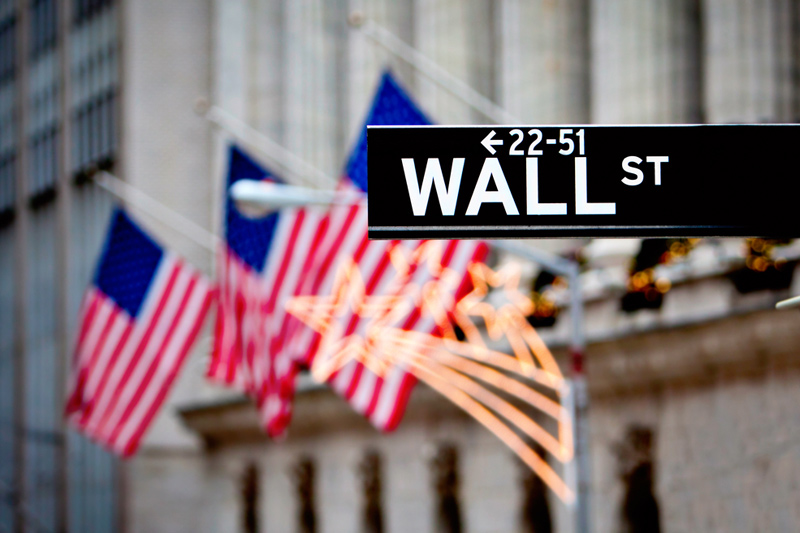
U.S. stock index futures steadied on Monday evening after the announcement of a U.S.-China trade deal sent Wall Street up sharply, with focus now on key upcoming inflation data for more economic cues.
S&P 500 Futures steadied at 5,865.25 points, while Nasdaq 100 Futures were flat at 20,942.0 points by 19:15 ET (23:15 GMT). Dow Jones Futures were flat at 42,508.0 points.
Wall Street gains cooled amid caution before key U.S. inflation data due later on Tuesday, given that the reading comes amid heightened fears over inflation remaining sticky for the coming months.
Wall St soars on US-China tariff relief
Futures steadied after Wall Street clocked stellar gains on Monday, as investors cheered a sharp deescalation in trade tensions between Washington and Beijing.
The U.S. will slash its 145% tariff rate on Beijing to 30%, while China will cut its retaliatory tariffs to 10% from 125%, both for a period of 90 days.
China also agreed to roll back non-tariff measures such as rare earth export controls.
The deal was announced in a rare joint statement by U.S. and Chinese officials, and came after high-level talks in Geneva, Switzerland, over the weekend.
The S&P 500 surged 3.3% to 5,844.17 points, while the NASDAQ Composite rose 4.4% to 18,708.34 points. The Dow Jones Industrial Average jumped 2.8% to 18,708.34 points.
Gains were broad-based, although major technology stocks rose sharply on hopes that major device makers such as Apple (NASDAQ:AAPL) will now face fewer trade-related disruptions.
Artificial intelligence-linked stocks- such as hyperscalers Microsoft (NASDAQ:MSFT) and Google (NASDAQ:GOOGL), and chipmakers Nvidia (NASDAQ:NVDA) and Broadcom- were encouraged by a BofA note that said capital spending on AI infrastructure was likely to remain strong this year and the next.
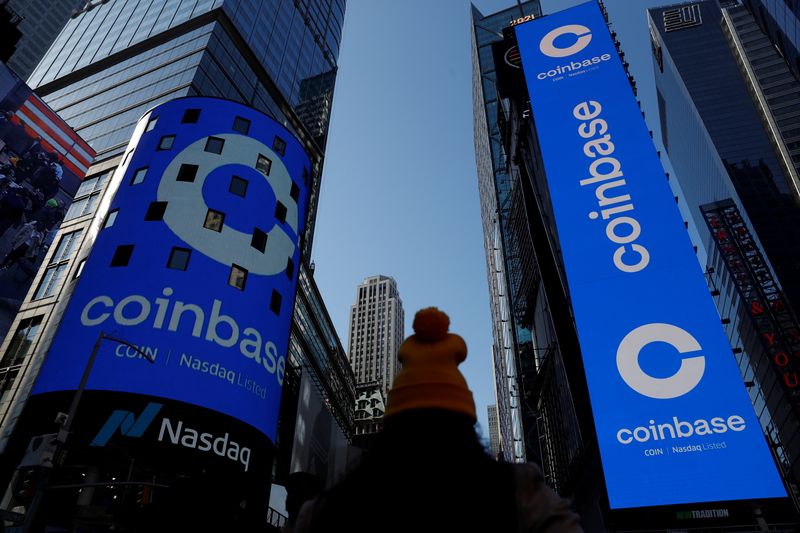
Shares of Coinbase Global (NASDAQ:COIN) surged on Monday evening as the top U.S. cryptocurrency exchange was set to join the S&P 500 index, replacing Discover Financial Services (NYSE:DFS).
The inclusion, effective May 19, marks a milestone for Coinbase, reflecting its growing prominence in the financial sector.
The move follows Capital One Financial (NYSE:COF) receiving approval for the acquisition of Discover, where the deal is expected to close on May 18.
Coinbase will be classified under the financials sector in the benchmark index, S&P Dow Jones Indices said in a statement.
Coinbase shares jumped more than 10% to $228.16 in extended trading. In regular trading, the stock gained nearly 4% on Monday.
Last week, the crypto exchange reported a drop in first-quarter profit, which also missed Street expectations.
The company had also announced that it would acquire crypto derivatives platform Deribit for $2.9 billion in cash and equity.
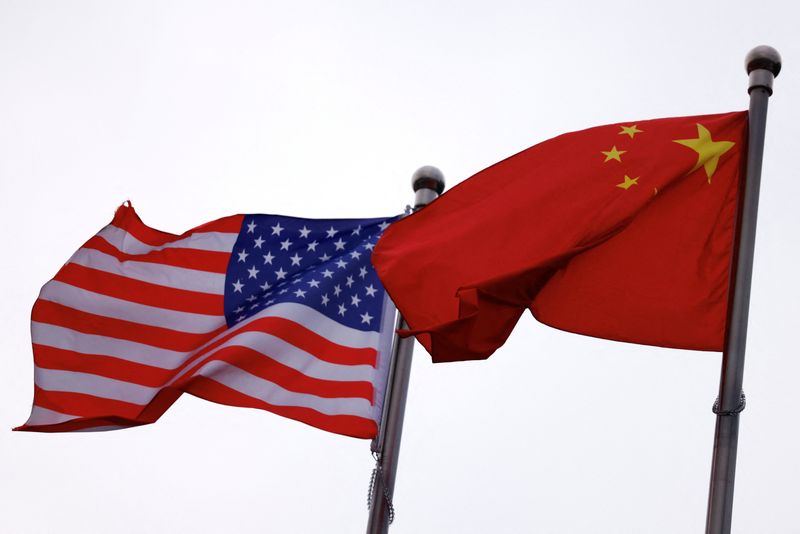
U.S. Treasury Secretary Scott Bessent said on Sunday that substantial progress has been made in the trade talks between the United States and China.
"I’m happy to report that we made substantial progress between the United States and China in the very important trade talks," Bessent said in a statement.
The discussions, aimed at defusing the ongoing trade war between the two countries, were held in Geneva and involved Bessent’s team and that of Chinese Vice Premier He Lifeng.
Bessent said that more details about the progress would be provided on Monday.
Jamieson Greer, the U.S. Trade Representative who was also present at the discussions, said that the differences between the two nations were not as significant as previously assumed.
"This was, as the Secretary pointed out, a very constructive two days," Greer stated. "It’s important to understand how quickly we were able to come to agreement, which reflects that perhaps the differences were not so large as maybe thought. That being said, there was a lot of groundwork that went into these two days."
"We’re confident that the deal we struck with our Chinese partners will help us to work toward resolving [the trade deficit]," Greer added.
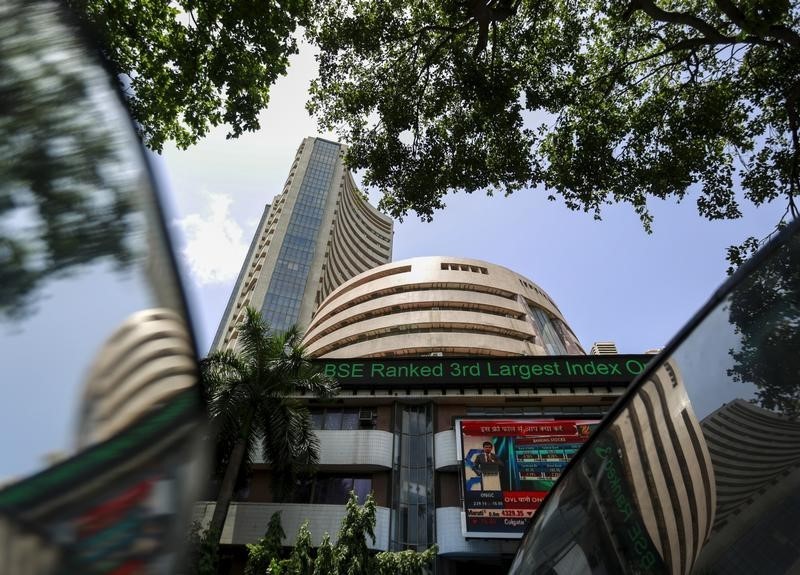
Indian stocks rose sharply in early trade on Monday as a U.S.-brokered ceasefire between New Delhi and Islamabad appeared to be holding, marking a deescalation in their recent armed conflict.
The Nifty 50 surged 2.8% to 24,692.90 points, while the BSE Sensex 30 rose 2.5% to 81,397.0 points by 09:57 AM IST (04:27 GMT).
The Nifty had fallen some 1.5% in the past three sessions, as India and Pakistan engaged in their worst fighting in nearly three decades. Tensions between the nuclear armed neighbors rose after India struck several alleged terrorist sites in Pakistan, in retaliation for a deadly attack in Indian Kashmir in April.
U.S. President Donald Trump announced over the weekend that Washington had brokered a ceasefire between India and Pakistan. While initial reports showed both New Delhi and Islamabad accusing each other of multiple violations, military action in Kashmir and along the Indo-Pak border was seen deescalating by Sunday.
Focus was now on whether the ceasefire will hold, and whether tensions will fall further between the two countries.
Two major points of contention are the Indus Water Treaty- which reports showed remained suspended despite the ceasefire- and a U.S. offer to broker negotiations over Kashmir, which was seen drawing discomfort from New Delhi.
India had pulled out of the Indus Waters Treaty in April, blocking the flow of key water sources into Pakistan.
In Indian stocks, while most sectors were positive, the Nifty Pharma index fell 0.8%, weighed chiefly by major stocks with large exposure to the United States. Losses in Asian drugmakers came after Trump said he will sign an executive order to slash U.S. drug prices.
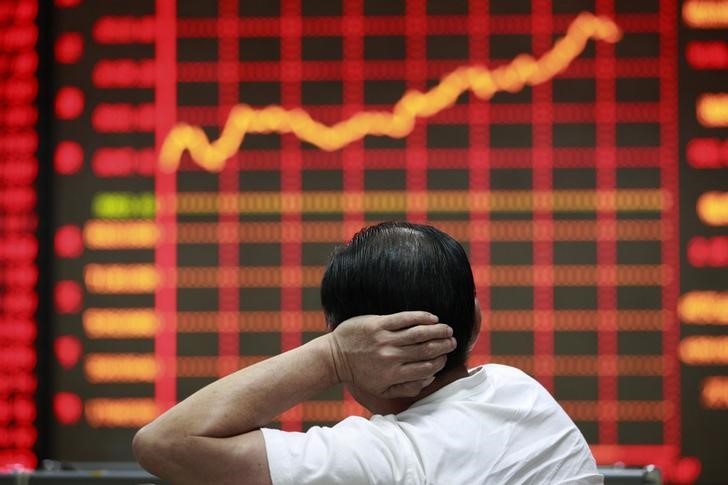
Asian stocks rose on Monday, with China in the lead after Beijing and Washington announced that they had reached a trade deal, while a ceasefire between India and Pakistan also primed the Nifty for strong gains.
U.S. stock index futures also rose sharply in Asian trade, with NQM25 up nearly 2% after Chinese and U.S. officials signaled on Sunday that a trade deal had been met, and that more details will be released later on Monday.
But gains in some indexes were held back by a drop in pharmaceutical stocks, after U.S. President Donald Trump said he will sign an executive order to slash U.S. drug prices.
Among major individual stocks, chipmaker TSMC (TW:2330) (NYSE:TSM) rose 1% in Taiwan trade after it posted record-high sales for April on Friday.
China stocks surge on US trade deal
China’s Shanghai Shenzhen CSI 300 and Shanghai Composite indexes added about 1.1% and 0.9%, respectively, while Hong Kong’s Hang Seng outperformed with a 1.5% jump.
U.S.officials said recent talks in Geneva, Switzerland, had gone well, and that a trade deal with China, to lower America’s trade deficit, had been reached.
Chinese officials also flagged welcome progress in the talks, and said that they will make a joint announcement with the U.S. later on Monday.
A potential trade deal marks a major deescalation in a bitter trade war between the world’s biggest economies, after they slapped trade tariffs of over 100% on each other in April.
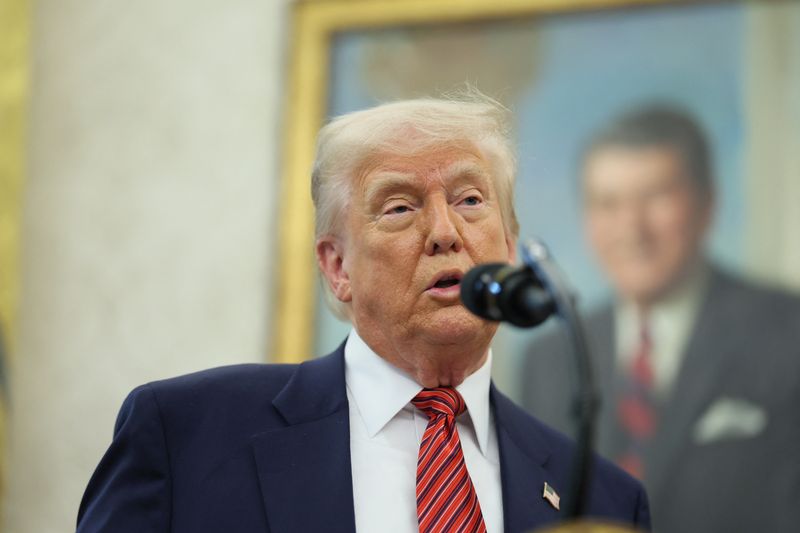
President Donald Trump announced on Sunday that he would sign an executive order Monday morning to slash U.S. prescription drug prices by aligning them with the lowest prices paid globally.
Posting on Truth Social, Trump criticized pharmaceutical companies for decades of inflated pricing. He said the U.S. has long paid far more for prescription medicines than peer countries, with some treatments costing five to ten times more despite being manufactured by the same companies in the same facilities.
“Prescription Drug and Pharmaceutical prices will be REDUCED, almost immediately, by 30% to 80%,” he wrote.
The order, Trump said, will implement a “Most Favored Nation” policy, compelling U.S. drug prices to match those of countries that pay the least for the same medications.
He claimed the move would save the country “TRILLIONS OF DOLLARS” and reduce healthcare costs for Americans by numbers never even considered.
Trump claimed that drug prices would increase across the globe to facilitate a decrease in U.S. prices, although he did not provide any details on how this would happen.
The U.S. President had in his first term also attempted to launch a drug pricing program based on international prices, although this was blocked by a court.

